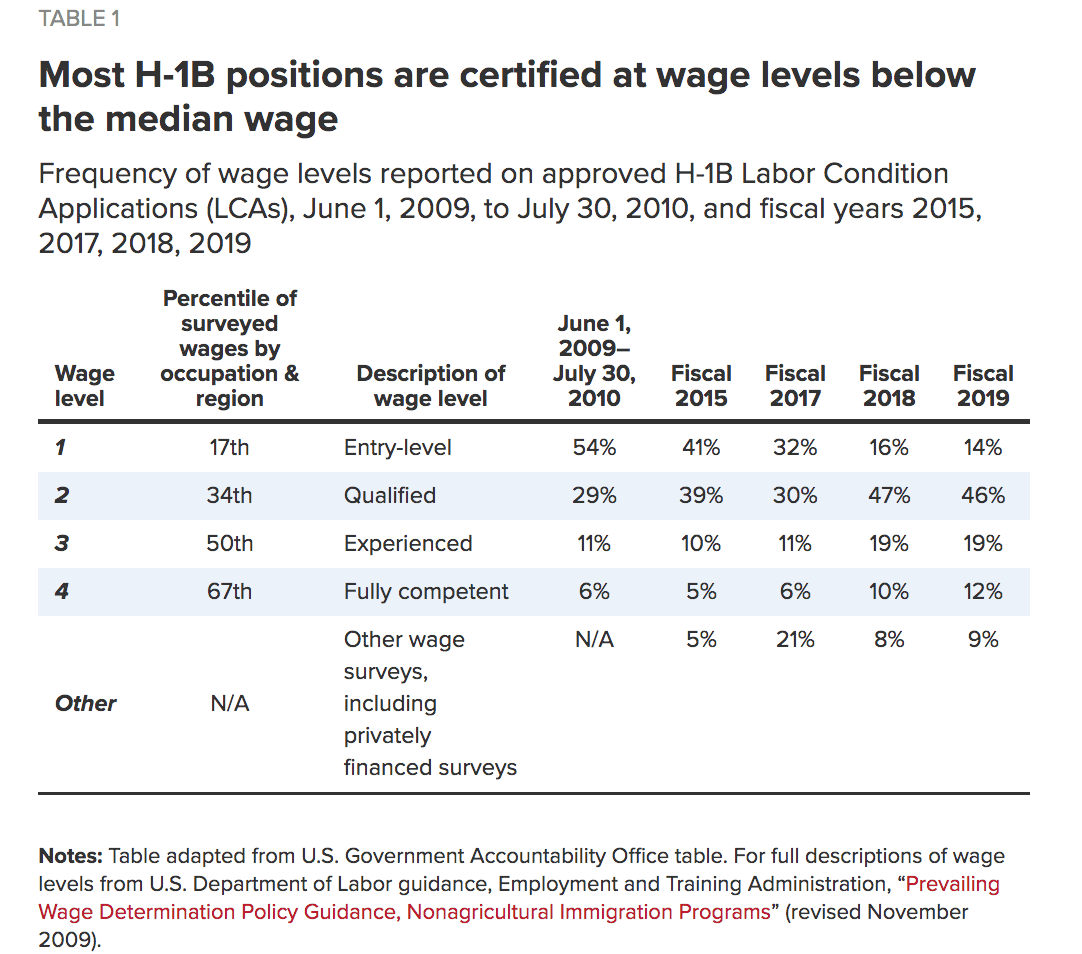The Wage Discount Employers Obtain from Hiring H1-B Visa Workers
Executive Summary
- The H1-B lobby wants US workers to think that lower wages are not a motivator for the H1-B visa program.
- This is why they don’t want them to see this information from research.

Introduction
The wage level of H1-B visa holders versus similarly categorized US domestic workers usually are not published. In fact, up until 2011, the government did not even publish the wages of H1-B visas.
Hiding the Wage Level Paid to H1-B Visa Holders
A study published by Daniel Costa and Ron Hira in the Economic Policy Institute titled H-1B visas, and prevailing wage levels found the following.
Three-fifths of all H-1B jobs were certified at the two lowest prevailing wage levels in 2019 (emphasis added)
Although salary information that corresponds to requested positions on LCAs has been made available by DOL for a number of years through the Office of Foreign Labor Certification’s LCA disclosure data, until recently the prevailing wage levels selected by employers were not readily available. In 2011, the Government Accountability Office (GAO) for the first time (emphasis added) reported what some had suspected and speculated about but to that point were not able to officially confirm: The vast majority of H-1B jobs were being certified by DOL at the two lowest wage levels.
Isn’t it curious that this was hidden from public view for so long? It is almost as if the H1-B lobby did not what the public to know that companies that employ H1-B workers were getting a very substantial price break on wages.
The percentage of each group assigned to each pay category is shown in the article below.

It does appear that the wages are rising. However, one has to wonder why this change happened between 2010 and 2019.
But the wage levels paid by H1-B employers to H1-B visa holders are worse than what this table shows.
The two lowest permissible H-1B wage levels are significantly lower than the median of salaries surveyed for the occupation in the local area
In order to understand the differences among salary amounts that correspond to prevailing wage levels, we provide an example in Table 2 that comes from the Foreign Labor Certification (FLC) Data Center’s Online Wage Library. The Online Wage Library lists prevailing wage levels for every available occupation and geographic area, based on DOL’s OES survey data, and employers visit this site to find the appropriate wage levels for the vast majority of H-1B positions they list on LCAs. (Employers used alternative wage surveys to set the prevailing wage for 9% of positions certified in 2019; see Table 1.)
Through categorization, the DOL is able to make low wages look higher than they are.
How Much of a Discount?
Employers hiring at Level 1 receive a discount of 36%, or $41,746, versus paying the median wage for the job in the region—represented by Level 3—and those hiring at Level 2 receive a discount of 18%, or $20,863.
(Notice this is for jobs in Washington DC, which is one of the more expensive places to live)
And yet, the H1-lobby and corporations that hire H1-B visa holders state that lower wages are never the motivation, its only about skills.
Conclusion
Companies that hire H1-B visa workers use the status of these workers to pay them less than prevailing wages (in addition to the depressing effect on wages simply through the increased supply of workers facilitated by the H1-B and other foreign worker visa programs.) This is the opposite of the claim made by the H1-B lobby that the primary reason for the H1-B visa program has nothing to do with paying lower wages and is all about “skills” and “US competitiveness.”
References
*https://www.epi.org/publication/h-1b-visas-and-prevailing-wage-levels/